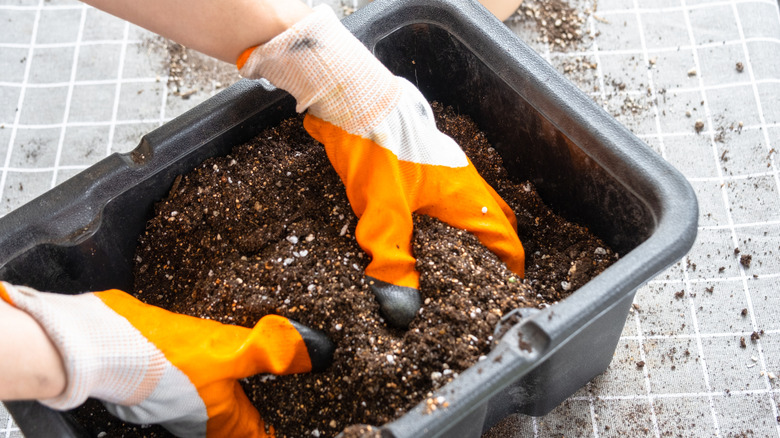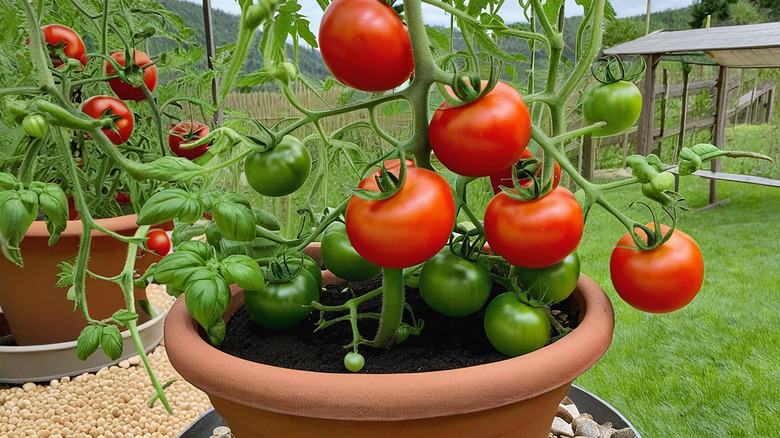The Best DIY Soil Mix For Container Vegetable Gardens
Have you experienced sticker shock recently when buying potting soil for your container vegetables? Like many products these days, potting soil is not cheap, challenging gardeners to try DIY soil options instead. The first — and cheapest — choice that may come to mind is to dig up yard or garden soil, but don't be tempted. The heaviness and density of everyday soil aren't appropriate for containers. Happily, you can create a DIY mix consisting primarily of 2 parts compost, 1 part peat moss or coconut coir, and 1 part vermiculite. Fun fact: None of these ingredients is soil, so you are actually making a soilless medium.
Let's look at how these three main ingredients meet the needs of container vegetables. Vegetables grown in containers need their growing medium to provide support, nutrients, and water storage. Since compost performs all those functions, you may wonder if compost alone is a good DIY potting medium for your container veggies. As valuable as it is, compost lacks the physical and chemical properties of soil, so other ingredients must be added.
Gardeners use vermiculite and peat moss for their exceptional abilities to hold water and allow air and moisture to permeate the soil. Although peat is popular, some gardeners consider it controversial because carbon is released into the atmosphere when it's harvested. If you prefer not to use peat, you can substitute coconut coir. Although coir doesn't retain quite as much water as peat, it offers similar benefits for vegetable plants in containers. As you choose between peat moss vs. coco coir, keep in mind you'll need to add calcium and nitrogen since those materials are deficient in these nutrients.
How to finish up your DIY soil mix
Your three-ingredient mix should satisfy the needs of your vegetable container garden, but you can consider substitutions and supplemental additions. Just don't add so much that you defeat the cost savings of DIY! Some gardeners add pine bark or use it as a substitute for peat or coir for its ability to provide anchoring structure and draw air into the "soil." Alternatively, you may find that volcanic rock perlite helps your garden's container veggies with more efficient drainage and expanded pore space.
Your final DIY product should be lightweight, and you can consider adding sand if your containers are too top-heavy. Many gardeners also like to add 5-10-5 fertilizer at this point — one with 5% nitrogen, 10% phosphorus, and 5% potassium — or organic fertilizers like blood meal and rock phosphate. To provide calcium, you can also add gypsum. It's a good idea to check the pH level after mixing ingredients since peat has a high acid content, and most plants require a pH between 6 and 7. Lastly, soak the mix in water before using since this type of soilless mix can be very dry.

